Navigating Complexity: Optimising NSWRMs modelling for science-based decision-making
The OPTAIN modelling process provides the case studies with a large number of results, known as Pareto-optimal solutions. Each solution represents an individual Natural/Small Water Retention Measure (NSWRM) implementation plan, a specific combination of different types of measures applied to specific sites within the case study catchment. Through an extensive multi-objective optimisation search of over 20,000 NSWRM plans, the solutions emerged as the best for four distinct catchment-scale objectives. Each solution is Pareto-optimal, this means it cannot perform better in one objective without lower outcomes in another. The results are therefore four-dimensional and it is not easy to understand and analyse them and to make them accessible to stakeholders who will have to choose a solution that best suits their individual preferences (Task 5.4).
Pareto post-processing in OPTAIN, described in detail in Deliverable 5.2 (Wittekind et al., 2025), aims to address these challenges. The tool will be available to researchers and stakeholders to explore the results, visualise them and make them easier to understand. The main output of this deliverable is an app called ParetoPick-R.
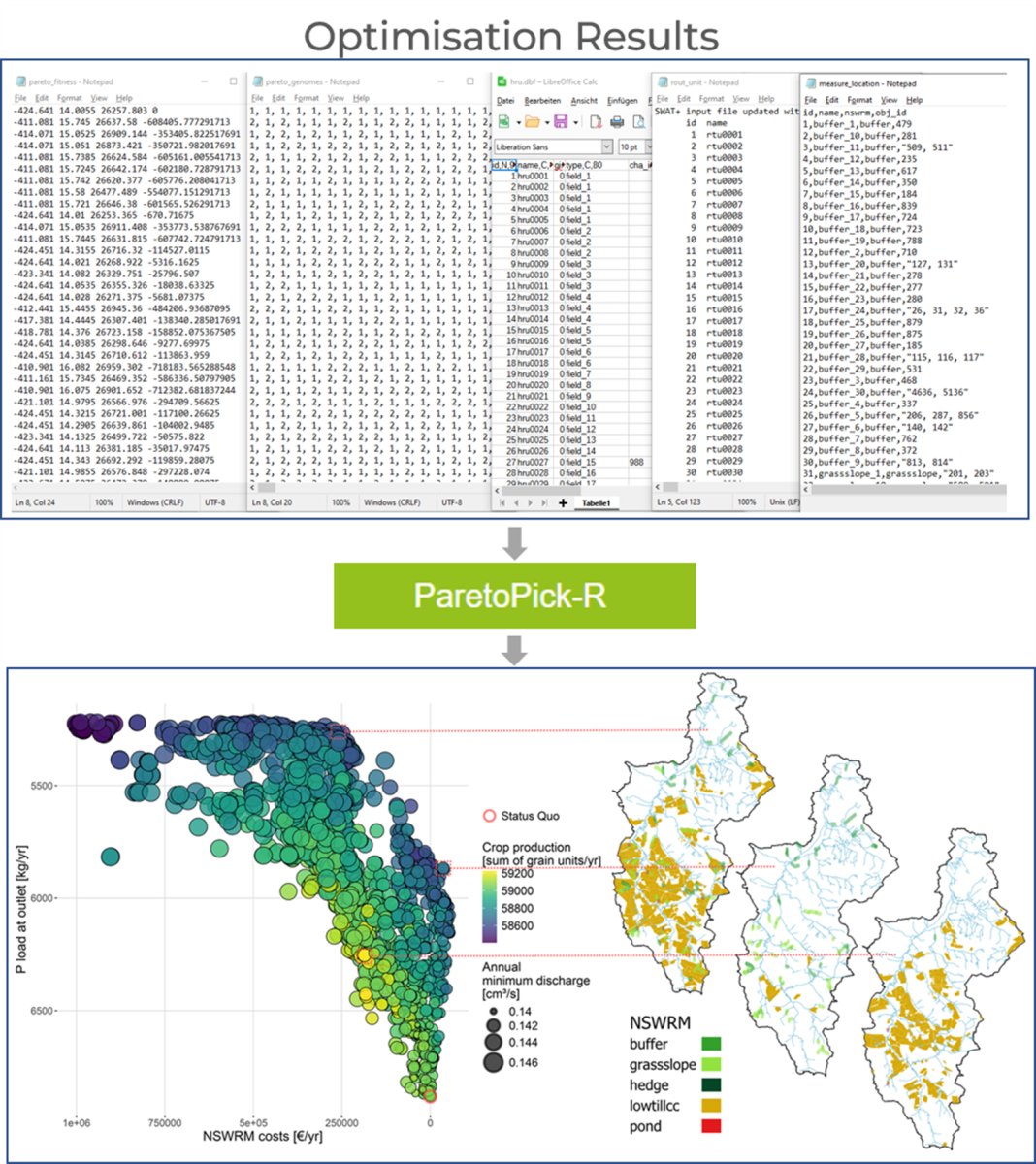
ParetoPick-R
ParetoPick-R is intended for both researchers and stakeholders. It can be used once all previous modelling and optimisation processes have successfully been performed. The user then uploads all required files and is ready to go.
Explore the Pareto front
A set of Pareto-optimal solutions non-dominated to each other is called a Pareto front. In the app, users can explore this front by visualising it in different ways. To explore the link back to the NSWRM implementation, the user can create maps of the individual plans by clicking on the desired solutions of the Pareto front (dots in the Pareto plot).
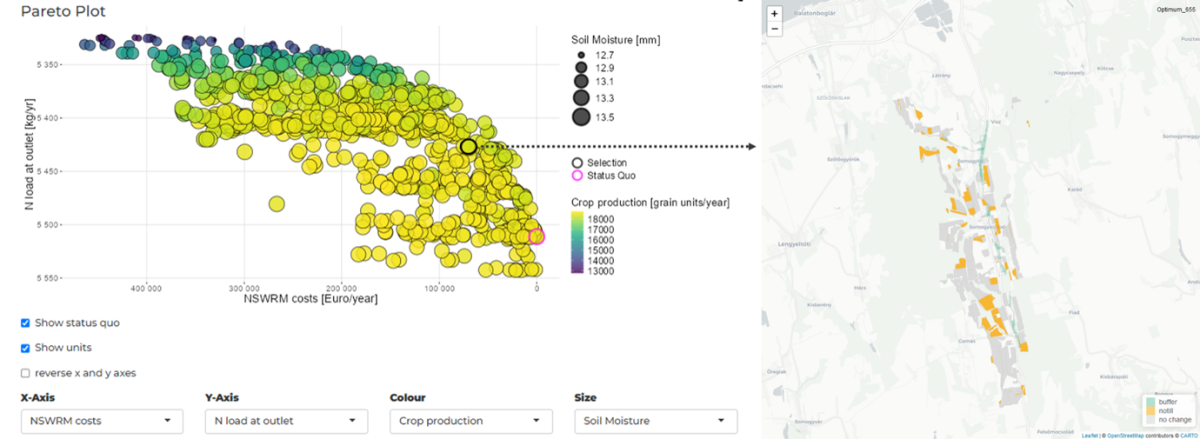
Users can change axes, limit objective ranges and explore the effects of altering the number of implemented measures. This process exposes broad relationships and tradeoffs that exist both among objectives and between the objectives and measures.
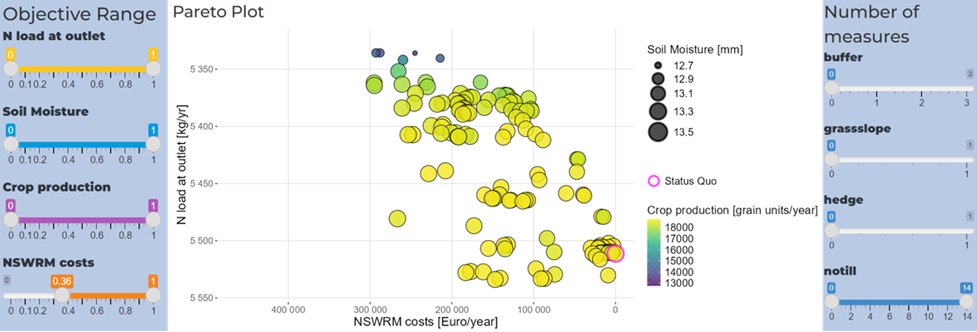
Learn from clusters
Users can easily cluster the Pareto front to reduce complexity, study the distribution of NSWRM implementation within each cluster and plot maps of representative solutions.
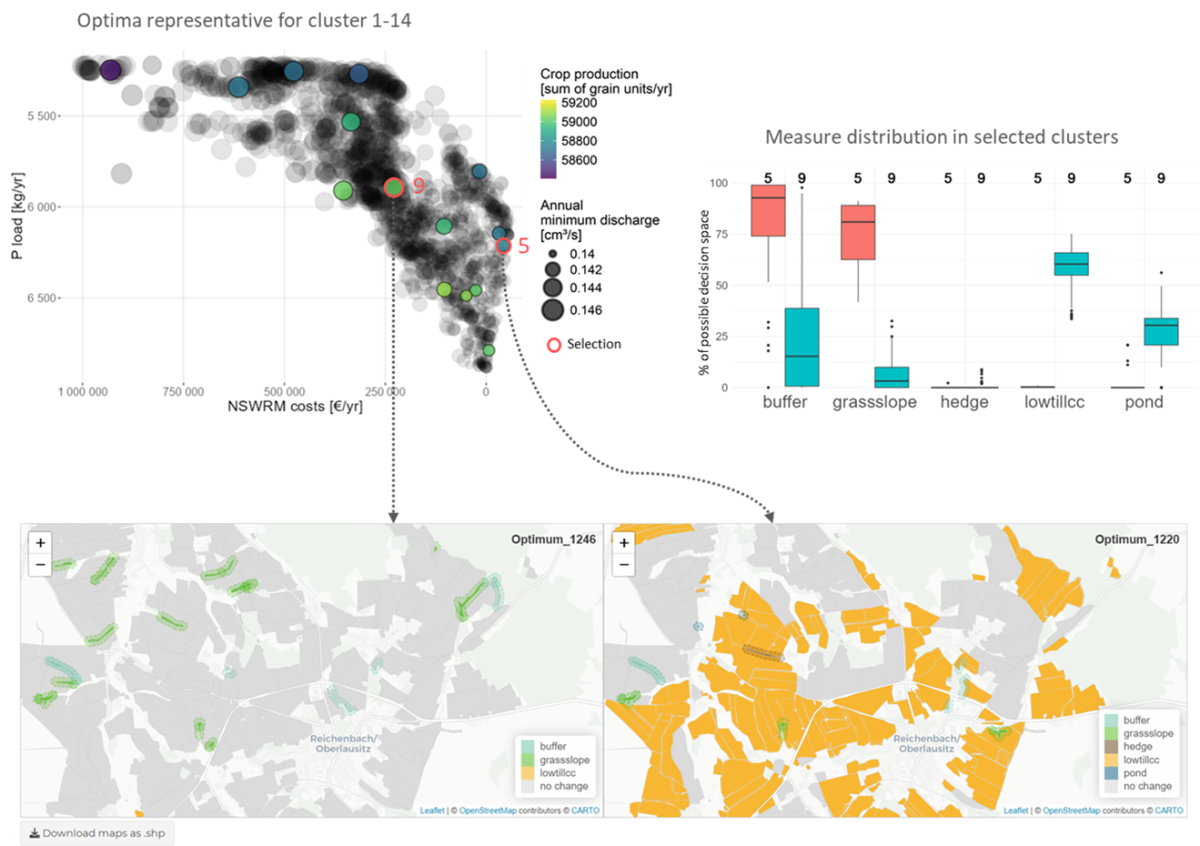
Identify stakeholder-preferred solutions
ParetoPick-R also implements an Analytical Hierarchy Process (AHP), a process to systematically assess stakeholders’ preferences by letting them assign pairwise preferences among objectives to then prioritize the objectives accordingly. The result is one optimum on the Pareto front that best aligns with this prioritization.
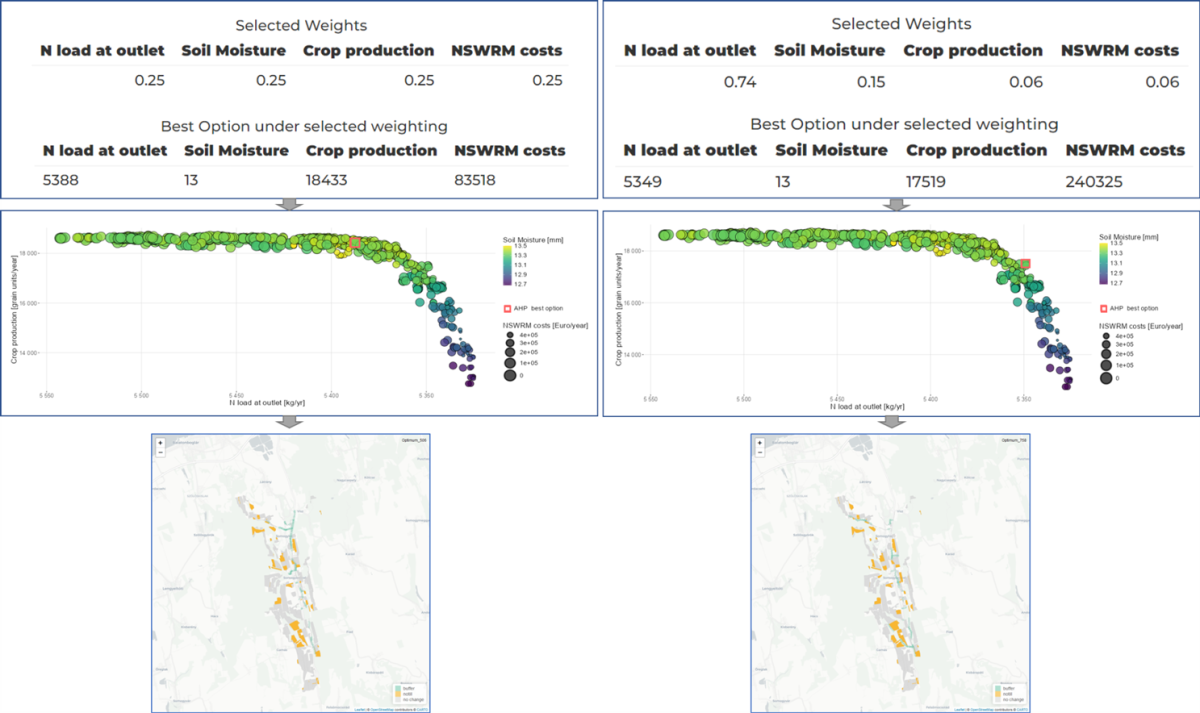
We hope ParetoPick-R supports you in processing and exploring the modelling and optimisation outputs in a fun and intuitive way! If you still have questions about the tool and OPTAIN's Pareto post-processing approach after reading Deliverable 5.2, please contact us (michael.strauch@ufz.de, cordula.wittekind@ufz.de).
Reference:
Wittekind, C., Strauch, M., & Witing, F. (2025). Post-processing & interactive visualisation of optimisation results. Deliverable D5.2 of the EU Horizon 2020 project OPTAIN. Zenodo. https://doi.org/10.5281/zenodo.15043864
Authors: Michael Strauch and Cordula Wittekind




















